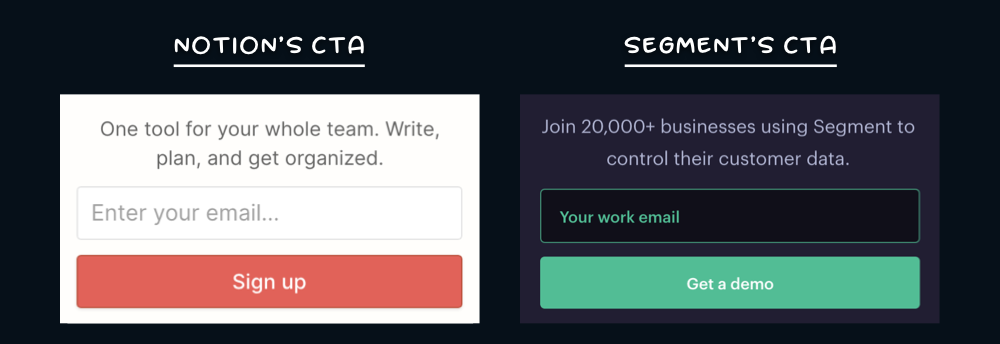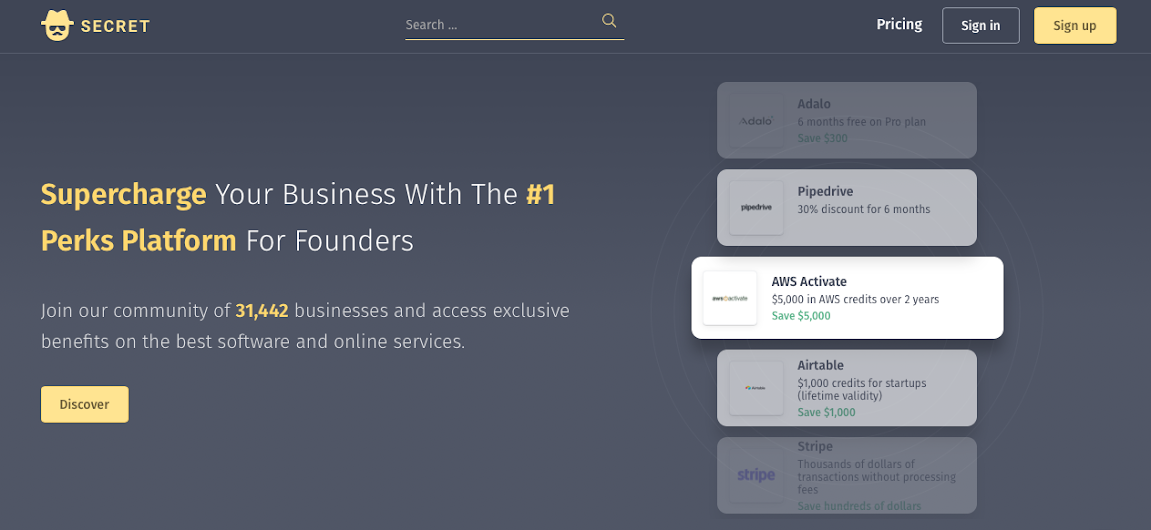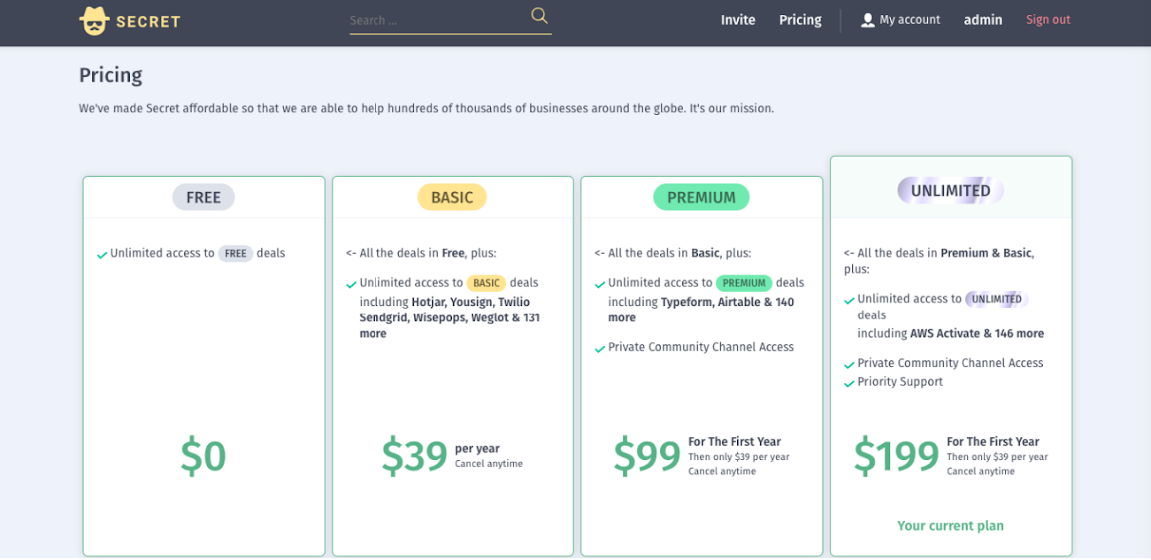February 18th. That's President Biden's deadline for accepting or rejecting Trump's executive order banning TikTok. For indie hackers interested in reaching users from Gen Z, the outcome matters. But more on that below. Here's what you'll find in thi
February 18th. That's President Biden's deadline for accepting or rejecting Trump's executive order banning TikTok.
For indie hackers interested in reaching users from Gen Z, the outcome matters. But more on that below.
Here's what you'll find in this issue:
-
Get the lowdown on Biden's upcoming decision on the TikTok ban — and why it matters to tech founders.
-
Marketing expert Harry Dry shares an in-depth guide for creating a compelling landing page. Learn how these tips can grow your audience.
-
Curious about Google's new Web Stories feature, but don't know where to start? We break it down for you using a real-world case study.
-
An indie hacker just hit $18K MRR helping founders access exclusive "perks." Read about his startup journey below.
As always, you can submit a section for us to include in a future newsletter. —Channing
🕵 Biden Will Determine TikTok's Fate in the US

from the Indie Alternatives newsletter by Bobby Burch
Users are now spending more time on TikTok than Facebook.
TikTok user time is up 325 percent year-over-year, placing it ahead of Facebook in time spent per user per month, according to App Annie. China-based TikTok is expected to surpass 1.2B active monthly users in 2021, making it one of the world’s most popular apps and an important platform for indie hackers to market and distribute their products.
However, TikTok's growth presents President Biden with a growing foreign policy challenge.
The no-background: In August, former President Donald Trump signed an executive order banning TikTok's US operations, in the interest of protecting national security. The order claims that TikTok allows the Chinese government to harvest user data, censor political topics, and spread misinformation.
Federal judges struck down the executive order, and the Trump Administration quickly appealed. Now, Oracle and Walmart are teaming up to buy TikTok’s US assets, and form a new entity.
Why it matters: Biden's handling of TikTok will dictate US policy around economic and political strategy regarding China. It’s currently unclear whether the Biden administration will ditch the appeal to ban TikTok. However, we do know that Biden’s pick for Secretary of State, Antony Blinken, has publicly committed to a hard stance concerning US-China relations.
What remains: In a broad bipartisan agreement, US lawmakers assert that the US must do more to fight China’s theft of intellectual property, and its influence on tech around the world. Foreign policy experts expect that the Biden administration's approach will be more consistent than Trump's.
Indie impact: TikTok is an important channel for indie hackers to market and distribute their products. Regulations around its US operations will have a profound impact on how founders can reach new customers that are increasingly put off by incumbent social media platforms like Facebook and Twitter.
Discuss this story, or subscribe to Indie Alternatives for more.
📰 In the News

🎥 Instagram Reels considers consolidating video formats in an effort to better compete with TikTok.
👾 Video games may be the future of remote work, as some companies create virtual reality headquarters.
#️⃣ Twitter plans to decentralize social media with a new web protocol for social platforms.
💸 Podcast monetization tool Anchor offers sponsorship opportunities for everyone, but small creators are getting left behind.
📣 YouTuber Marques Brownlee talks the business of influence and successfully scaling a media brand.
🛬 A Marketing Expert's Step-by-Step Guide to Landing Pages

from the Marketing Examples newsletter by Harry Dry
There are two parts of a landing page: what’s immediately visible (above the fold), and what the user scrolls to (below the fold).
Let's start above the fold. Donald Miller said:
A caveman should be able to glance at it and immediately grunt back what you offer.
Here’s my formula:
- Explain the value you provide (title)
- Explain how you'll create it (subtitle)
- Let the user visualize it (visual)
- Make it believable (social proof)
- Make taking the next step easy (CTA)

Title
There are countless ways to write a great title. I'm going to focus on three.
Explain what you do:
When your product is unique, all you have to do is explain what you do as simply as possible.

Hooks
Most products aren't unique, so they need a great hook. The easiest way to write hooks is to address your customer's biggest objection.

Own your niche
Write with conviction, because you're THE solution.

Subtitle
Subtitles are where you get specific. Introduce the product and explain how it creates the value in your title.

Visual
Don't show me fancy illustrations. Show off your product in all its glory. Even better, show your product in action.

Social Proof
Social proof (above the fold) adds instant credibility to the value you're promising.
Take Privy, for example. Any startup can write "How small brands sell more online." But it's their "18,000+ reviews" that make you believe it.

Call to action
Your call to action (CTA) makes it easy for users to take the next step.
Most buttons emphasize action: "Sign Up," "Start Trial," etc. Here's how to make your CTA more compelling:
Call to value:
Buttons that emphasize “value” over “action” usually perform better. The trick is to deliver the value your title promises.

Objection handle:
Add a few words to your CTA to handle the user's biggest objection to clicking.

Email capture + CTA:
Pair email capture with your CTA to make signing up as easy as possible.

“Above the fold” recap
In five seconds, customers establish whether or not you can help them. Make their lives easier.
- Explain the value you provide (title)
- Explain how you'll create it (subtitle)
- Let the user visualise it (visual)
- Make it believable (social proof)
- Make taking the next step easy (CTA)

“Below the fold”
Above the fold, you earn the customer's attention. Below the fold, you earn the sale. To continue on to the second half of my guide, check out the full post.
Discuss this story, or subscribe to Marketing Examples for more.
🍪 Growth Bite: Breaking Down Google's New Web Stories Feature

from the Growth Bites newsletter by James Fleischmann
Movies wouldn't sell many tickets without trailers. And Google's new Web Stories serve the same purpose — summarizing and promoting your content.
WordLift boosted their traffic by 504% and got over 263,000 impressions in a few days with one simple Web Story that became popular on Google Discover.
WordLift's CEO, Andrea Volpini, suggests you can do the same.
What you do: Take your best articles and create Web Stories that summarize them, essentially acting as trailers for the articles.
How you do it: Use tools like MakeStories or Newsroom AI to create the Stories. Or if you use WordPress, try Google's Web Stories Editor. And, of course, you can always code it yourself.
Extra credit: The Stories should be concise and easy to consume. Use videos and animations when possible. And make them more skimmable by numbering the frames.
Discuss this story, or subscribe to Growth Bites for more.
🤫 The Founders of Secret Just Bootstrapped to $18K MRR

from the Deep Dive newsletter by Halden Ingwersen
Jean-Loup Karst sold his first startup, Breaz.io, to Hired.com for over $1M. But looking back over his startup journey, he was frustrated.
Unlike his competitors in big tech, Jean-Loup was bootstrapping. When he examined the journeys of big tech startups, he honed in on one very valuable element: "perks." These are small, but crucial, advantages such as business tools, access to enterprise-level app tiers, free or discounted products, etc.
This inspired Jean-Loup to start Secret, a platform that helps founders access those exclusive perks to grow their businesses.

The project was immediately met with serious challenges. Neither Jean-Loup, nor his co-founder Edouard, knew how to code. Edouard enrolled in a coding bootcamp called Le Wagon to learn Ruby on Rails and StimulusJS. Jean-Loup said:
The challenge when you don't have a lot of resources and a full-time technical team is that you have a lot of ideas, but you must observe your budget constraints and always be in a "the less the better" mindset.
The next challenge was that Jean-Loup didn't know how to monetize the site's offerings. Secret offers consumers excellent deals on a variety of digital tools, and the point was to make these perks as accessible as possible. However, companies weren't willing to just offer the deals for free, and most didn't want to pay Jean-Loup a commissioned finder's fee. He realized he'd need to charge his audience for memberships.
His first pricing plan, freemium with a very cheap paid tier, got no bites. It turned out that users thought the deal was too good to be true and assumed it was a scam. This forced Jean-Loup to pivot to a different sort of freemium model: a $99 Premium package, and a $199 Unlimited package. Secret's Unlimited offerings include deals with big-name companies like AWS, Notion, and Airtable, justifying the higher price tag.
This year, one of Jean-Loup's goals is to offer another tier. However, he's not in a rush. He has learned that iterating on a pricing strategy is a challenge that requires deliberate intention and care.

Jean-Loup had two of the three ingredients he needed for a successful company (a market fit and a website), but he still needed more customers in order to keep Secret afloat. That proved to be much harder than he anticipated. In fact, Secret failed at most of the "classic" indie hacker strategies.
Product Hunt hid Secret on their platform due to its similarities to their own Founder Club. Cold emailing and LinkedIn outreach drove virtually no conversions. Search engine marketing didn't fit into their budget. Nothing seemed to be working for successful user acquisition.
Turns out that Secret's growth would be mainly through word-of-mouth. Jean-Loup began to use Secret's free offering as leverage to build partnerships with organizations, and this spread the word. Secret also launched an affiliate program that drove roughly 20% of the site's total growth.
Even during the period of stalled growth, Jean-Loup didn't see giving up as an option. He said:
We always felt we were into something. What was missing for a while was market fit. We always felt all it took was to do the right pivot. That's what kept us going, the feeling that we were close.
Today, Secret isn't a secret anymore. The platform now has over 10K users, and is making $18K each month. It has experienced an average monthly growth of $1K.
But Jean-Loup's biggest tips have less to do with improving your business, and more to do with improving yourself. Tip number one? Go to therapy.
I've been in therapy for five years now. I think it improved the quality of my mind tremendously....overall today I’m less stressed, less anxious, I better trust my intuition, and my ability to focus has improved. My emotions are more stable.
All the things that make you a happier, healthier person make you a better founder as well.
He also suggests that founders take the time to do manual things themselves and remember that success and failure are cycles, not finals. Lastly, he said:
Talk to your customers on the phone. Ask them questions. Listen. They are the ones that will give you the best ideas for the business.
- You can find Secret here.
- You can also connect with Jean-Loup on LinkedIn.
Discuss this story, or subscribe to Deep Dive for more.
🐦 The Tweetmaster's Pick

by Tweetmaster Flex
I post the tweets indie hackers share the most. Here's today's pick:

🏁 Enjoy This Newsletter?
Forward it to a friend, and let them know they can subscribe here.
Also, you can submit a section for us to include in a future newsletter.
Special thanks to Jay Avery for editing this issue, to Nathalie Zwimpfer for the illustrations, and to Bobby Burch, Harry Dry, James Fleischmann, and Halden Ingwersen for contributing posts. —Channing



















